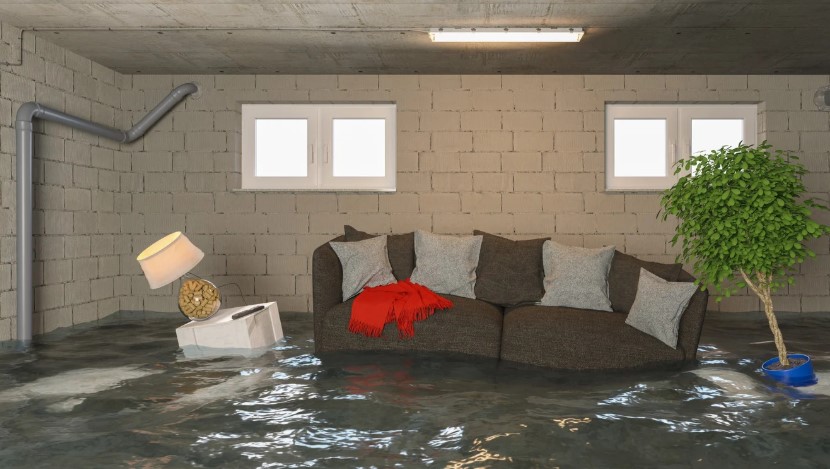- Why It's Important to Find a Water Leak Inside a Wall Early?
- How I Noticed the First Signs of a Leak?
- What Are the Signs of a Hidden Wall Leak?
- The Tools I Used to Track Down the Leak
- How to Find a Water Leak Inside a Wall? – My Step-by-Step Process
- When I Decided to Call a Professional?
- How Much Does Leak Detection and Repair Typically Cost in the UK?
- What Can Be Done to Prevent Future Leaks Behind Walls?
- Final Thoughts on How to Find a Water Leak Inside a Wall
- Common Questions on How to Find a Water leak inside a Wall
Water leaks that occur behind walls can be a nightmare to identify and fix.
I faced this exact issue in my home, and through trial, error, and expert advice, I managed to trace and solve the problem without tearing down half the house.
In this guide on how to find a water leak inside a wall, I’ll share exactly how I found the leak, the tools that helped, and what to do if you’re dealing with something similar.
Why It’s Important to Find a Water Leak Inside a Wall Early?
Leaks that occur behind walls aren’t always obvious. I learned this the hard way.
By the time I noticed faint water stains near the floor, the internal wall damage was already extensive.
The problem with hidden leaks is that they can silently cause:
- Structural damage to the timber framing
- Plasterboard disintegration
- Electrical hazards if wires are nearby
- Dangerous mould and mildew growth
If a wall leak goes unnoticed for weeks or months, it can lead to repairs that cost far more than the original issue.
How I Noticed the First Signs of a Leak?
My first indication of trouble wasn’t a burst pipe or a flood — it was a subtle, persistent musty smell.
The paint on the lower part of the living room wall started bubbling, and I could hear a faint dripping sound at night when the house was quiet.
Initially, I dismissed it, but when my water bill unexpectedly increased, I knew I had to act.

What Are the Signs of a Hidden Wall Leak?
Based on my experience, here are some red flags that may point to a leak behind a wall:
- Dampness or discoloured patches on the wall
- Peeling or bubbling paint and wallpaper
- Musty or mouldy smells
- Dripping or hissing sounds from the wall
- Unexplained increase in water bills
- Flooring near the wall becoming warped or spongy
Even one of these signs should prompt an investigation. Multiple signs usually confirm the presence of a hidden leak.
The Tools I Used to Track Down the Leak
I didn’t start by cutting into the wall. Instead, I gathered a few tools to narrow down the location:
| Tool | Use | Suitability for DIY |
| Moisture meter | Measures dampness levels in walls | Yes |
| Thermal imaging scanner | Detects temperature differences | Partially (rental/pro) |
| Water meter monitoring | Helps confirm ongoing leakage | Yes |
| Acoustic leak detection kit | Locates sound from hidden pipe leaks | No (usually pro use) |
The moisture meter was the most affordable and easiest tool for me. It helped confirm that moisture levels were much higher in one specific section of the wall.

How to Find a Water Leak Inside a Wall? – My Step-by-Step Process
Here’s exactly how I identified the location of the leak without causing unnecessary damage:
Step 1: Visual Inspection
I examined the wall for any visible stains, damp patches, a hole or warped areas.
The area behind the bookshelf felt slightly cooler and looked off-colour — a subtle but telling sign.
Step 2: Checking with a Moisture Meter
I scanned various parts of the wall with a basic moisture meter.
The readings spiked drastically in a particular area, which helped me isolate the problem zone.
Step 3: Water Meter Test
To confirm there was a continuous leak, I turned off all taps and appliances and then monitored the water meter.
The dial was still moving, indicating water loss somewhere in the system.
Step 4: Narrowing Down the Area with Thermal Imaging
I rented a handheld thermal scanner for a few hours. It showed a cooler patch within the wall where water was likely present. This confirmed the moisture meter’s results.
Step 5: Minimal Wall Opening
Only after identifying the likely leak location did I cut into the wall. Behind the plasterboard, a small pinhole leak in a copper pipe had been steadily releasing water.
When I Decided to Call a Professional?
Although I managed to find the leak, repairing the pipe was outside my comfort zone. The leak was near a junction point, and I didn’t want to risk making it worse. I called a licensed plumber who:
- Replaced the damaged section of the pipe
- Sealed the joint to prevent future leaks
- Recommended some insulation to reduce condensation
Calling in a professional helped me avoid a major DIY mistake and ensured the repair would last.
How Much Does Leak Detection and Repair Typically Cost in the UK?
Here’s a breakdown of what I spent and what you might expect to pay:
| Service/Tool | Estimated Cost in the UK |
| Moisture meter | £20 – £50 |
| Thermal scanner rental | £30 – £60 per day |
| Leak detection service | £120 – £250 |
| Minor plumbing repair | £150 – £300 |
Prices can vary depending on your location and the severity of the issue, but in most cases, early detection will always save you money in the long run.

What Can Be Done to Prevent Future Leaks Behind Walls?
After fixing the leak, I took a few steps to make sure this wouldn’t happen again:
- I installed smart water leak detectors in key areas of the house
- I scheduled annual plumbing checks with a local plumber
- I made a point to avoid drilling or hammering into walls without first checking for pipes
Preventative action is far cheaper than emergency repairs, and it gives peace of mind.
Final Thoughts on How to Find a Water Leak Inside a Wall
Discovering a water leak inside a wall is stressful, but with the right approach and with the guides help on how to find a water leak inside a wall, it doesn’t have to turn into a full-blown crisis.
My advice is simple: stay alert to early signs like mould or strange sounds, invest in basic detection tools, and don’t hesitate to call in a professional when things go beyond your comfort level.
Taking swift action saved me hundreds in repairs and stopped the damage before it became unmanageable.
Common Questions on How to Find a Water leak inside a Wall
1. Can a water leak behind a wall go away on its own?
No. A leak will continue to cause damage as long as it exists. Even if it seems to dry temporarily, water is likely accumulating deeper within the wall or spreading elsewhere.
2. Does home insurance cover hidden wall leaks in the UK?
It depends on the policy. My insurance covered the resulting damage (like wall repair), but not the cost of locating or fixing the leak itself. Always check your policy details or contact your insurer for clarification.
3. Should I break the wall to find the leak?
Only as a last resort. Try using a moisture meter or thermal imaging first. These tools can narrow down the area and avoid unnecessary damage.


0 Comments